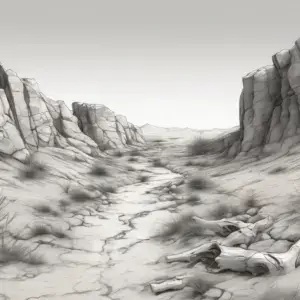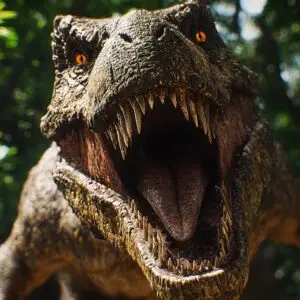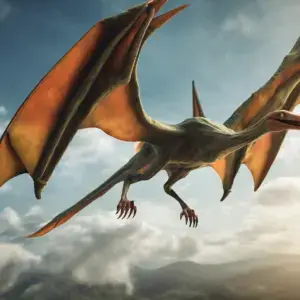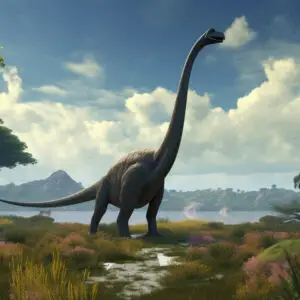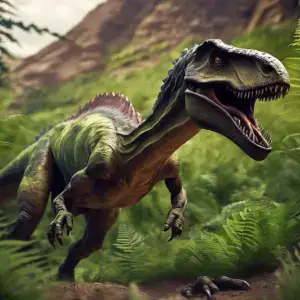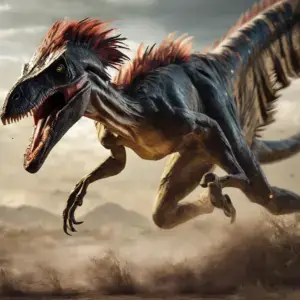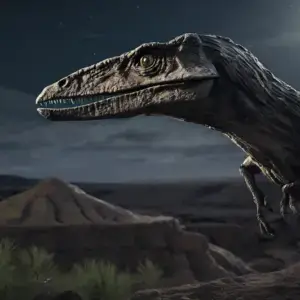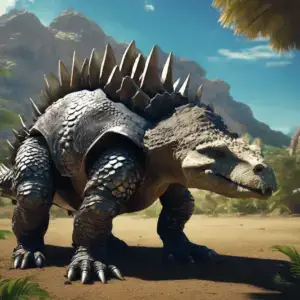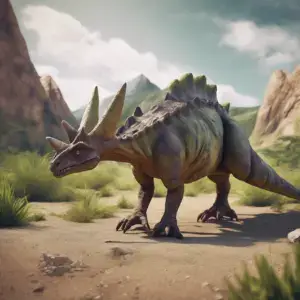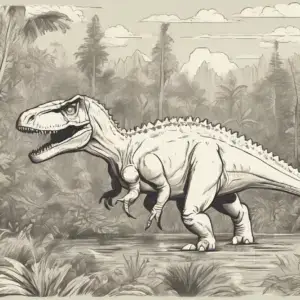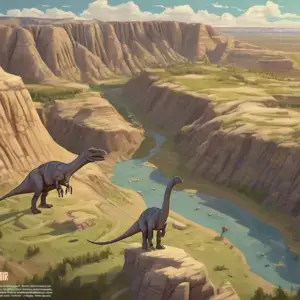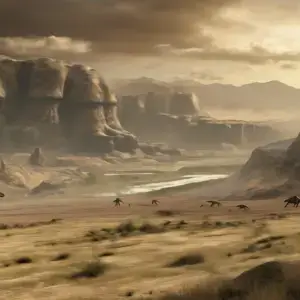Black Beauty: The Jet-Black T-Rex That Rewrote Paleontology
September 19, 2025
5 min read
 Black Beauty’s distinctive jet-black skeleton on display at the Royal Tyrrell Museum – a discovery that changed paleontology forever
Black Beauty’s distinctive jet-black skeleton on display at the Royal Tyrrell Museum – a discovery that changed paleontology foreverWhen Two Schoolboys Changed Dinosaur Science Forever
August 12, 1980. Two teenage boys, Jeff Baker and Tim Tokaryk, were doing what countless Alberta kids had done before them – fishing along the Crowsnest River, hoping for trout but mostly just enjoying a summer day away from chores and homework. What they found instead would revolutionize our understanding of the most famous predator in Earth’s history.
Sticking out of the riverbank, gleaming like polished obsidian in the afternoon sun, were bones unlike anything they’d ever seen. Not the usual brown or tan fossils that occasionally turned up in Alberta’s Badlands, but bones so black they seemed to absorb light itself.
🦴 Black Beauty Discovery Facts
- Discovery Date: August 12, 1980
- Discoverers: Jeff Baker (age 16) and Tim Tokaryk (age 15)
- Location: Crowsnest River, southwestern Alberta
- Age: 67 million years old (Late Cretaceous)
- Completeness: 65% complete skeleton
- Scientific Name: Tyrannosaurus rex (specimen TMP 81.6.1)
The boys had stumbled upon what would become known as “Black Beauty” – one of the most complete and scientifically significant Tyrannosaurus rex specimens ever discovered. But this wasn’t just another T-Rex. Black Beauty would challenge everything paleontologists thought they knew about the king of dinosaurs, from how they grew to how they lived and died.
Today, Black Beauty stands as the crown jewel of the Royal Tyrrell Museum, drawing hundreds of thousands of visitors annually to Drumheller. But the real story isn’t just about a museum exhibit – it’s about how a chance discovery by two curious teenagers rewrote the textbooks on one of prehistory’s most iconic creatures.
This is the complete story of Black Beauty: from that fateful fishing trip to the scientific revelations that continue to this day, and why this jet-black T-Rex remains one of paleontology’s most important discoveries.
The Discovery: A Fishing Trip That Made History
Jeff Baker and Tim Tokaryk weren’t looking to make scientific history on that warm August day in 1980. They were just two high school students from nearby Pincher Creek, armed with fishing rods and a cooler of sandwiches, heading to their favorite spot along the Crowsnest River.
The Crowsnest River area was well-known to local fossil enthusiasts. The region’s exposed Cretaceous rock formations had yielded numerous dinosaur discoveries over the decades, but most finds were fragmentary – a tooth here, a bone fragment there. Complete skeletons were rare, and T-Rex specimens were practically nonexistent in southern Alberta.
📅 Discovery Day Timeline – August 12, 1980
9:00 AM – The Fishing Trip Begins
Jeff and Tim arrive at their usual fishing spot along the Crowsnest River. Water levels are unusually low due to a dry summer, exposing more riverbank than normal.
11:30 AM – The Unusual Sighting
While walking along the riverbank looking for better fishing spots, Tim notices something unusual – dark, almost black objects protruding from the mudstone cliff face.
12:00 PM – The Realization
Upon closer inspection, the boys realize they’re looking at fossilized bones. But these aren’t ordinary fossils – they’re jet black and incredibly well-preserved.
2:00 PM – Documentation
Jeff takes photographs with his father’s camera while Tim sketches the site. Both boys understand they’ve found something significant.
4:00 PM – The Report
Back in town, the boys contact the Provincial Museum of Alberta (now Royal Alberta Museum) to report their discovery.
The Boys Who Made the Find
Jeff Baker and Tim Tokaryk weren’t just lucky – they were prepared. Both teenagers had grown up in fossil-rich southern Alberta and had been taught by parents and teachers to recognize and report significant paleontological finds. Their careful documentation and immediate reporting to authorities ensured that Black Beauty would be properly excavated and studied.
Jeff Baker – The Photographer
At 16, Jeff was already an accomplished amateur photographer with a keen eye for detail. His photographs of the discovery site proved crucial for paleontologists planning the excavation. Jeff went on to study geology at the University of Calgary and later worked as a petroleum geologist.
Tim Tokaryk – The Future Paleontologist
Tim’s discovery of Black Beauty sparked a lifelong passion for paleontology. He earned his Ph.D. in paleontology and became a professional paleontologist, eventually working at the Royal Saskatchewan Museum. The discovery literally shaped his career path.
💬 Tim Tokaryk Remembers:
“We knew we’d found something special, but we had no idea it would turn out to be one of the most important T-Rex discoveries ever made. Those black bones just seemed to glow against the mudstone. It was like the river had given up one of its greatest secrets.”
The Initial Response
When the boys’ report reached Dr. Philip Currie at the Provincial Museum of Alberta, his initial reaction was cautious optimism. Southern Alberta wasn’t known for T-Rex discoveries – most came from further north or from the United States. But the boys’ detailed photographs and descriptions suggested this could be significant.
Within 48 hours, a preliminary investigation team was dispatched to the site. What they found exceeded even the most optimistic expectations: not just a few scattered bones, but what appeared to be a largely complete T-Rex skeleton in remarkable preservation.
The Excavation: Unearthing a Prehistoric Treasure
The excavation of Black Beauty became one of the most carefully documented dinosaur digs in Canadian paleontological history. Led by Dr





